
EVN/JIVE Newsletter - Edition 67 January 2024
Welcome to the January 2024 issue of the EVN/JIVE newsletter.
Happy New Year and I hope 2024 will bring continued scientific success to the EVN Community. This year marks the 40th anniversary of the formal constitution of the EVN: the signing of the EVN Memorandum of Understanding took place shorty after a meeting of the EVN Directors in Vienna in June 1984. That year also saw the first, and very successful, World Array’ VLBI experiments using 18 antennas in a global array (including MERLIN) and the first EVN observations with the new 32-m telescope at Medicina. For 2024 I could also list the 70th anniversary of work starting on the Dwingeloo radio telescope, the 60th anniversary of construction of the Mk2 telescope at Jodrell Bank, the 50th anniversary of CLEAN, and it is now 20 years since the first pioneering 1 Gb/s EVN observations on tape and JIVE will celebrate its 30th anniversary, along with the 10th anniversary of becoming an ERIC later this year.
The science highlights presented in this newsletter demonstrate how far we have come in being able to resolve radio phenomena in both space and time in recent years, but this long history also demonstrates the coherence of our community and our ability to maintain and steadily develop the VLBI technique, bringing together skills, knowledge and resources from all the EVN member institutes including JIVE.
The central and essential role of JIVE for the EVN has been confirmed in the overwhelmingly positive review of JIVE, carried out by an independent and international panel, chaired by Colin Lonsdale, and it is a pleasure to congratulate the JIVE Director, Agnieszka Słowikowska and all the JIVE staff on this outcome.
The EVN Directors would also like to thank Dr Rene Vermeulen, ASTRON, who has now stood down from the CBD after 17 years, for all his contributions to the EVN, including chairing the CBD from 2015-17 and starting with his observations of SS433 in 1985, which consumed almost an entire EVN session! We can now also congratulate Rene on successfully creating the new LOFAR ERIC, officially established by the European Commission on 20 December 2023.
Finally, it is with great sadness that we note the passing of Dr Jesus Gomez Gonzales, IGN Spain. Jesus was the first director of the Yebes Observatory; he involved the IGN in the EVN, was one of the founders of JIVE and was responsible for the Spanish partnership in JIVE as well as geodetic VLBI via IVS and VGOS.
Simon Garrington
Jodrell Bank Observatory, University of Manchester
EVN CBD Chair

Observing proposals are invited for the European VLBI Network (EVN). Deadline: 1 February 2023, 16:00:00 UTC. The EVN facility is open to all astronomers, but see below for the restrictions currently applied to PIs and co-Is with affiliation to Russian institutes. Astronomers with limited or no VLBI experience are particularly encouraged to apply for observing time. Student proposals are judged favourably. Support with proposal preparation, scheduling, correlation, data reduction and analysis can be requested from the Joint Institute for VLBI ERIC (JIVE). Check details of the call for proposals here
EVN Support+ programme
JIVE/EVN has a programme to provide extended support to teams new to the EVN, with little or no direct VLBI experience. This includes the scheduling of the VLBI run and the VLBI-specific parts of the data reduction (including a-priori amplitude calibration and fringe-fitting). Imaging, and the interpretation of the data is the responsibility of the team. We aim to support some standard VLBI projects, evaluated by the EVN Program Committee with the highest grades. See the call for proposals for more information. For further questions please contact the Chair of the EVN PC, Zsolt Paragi (evnpc@jive.eu).
Uncovering the innermost jet in the hidden ultra-luminous X-ray source Cygnus X-3
Jun Yang
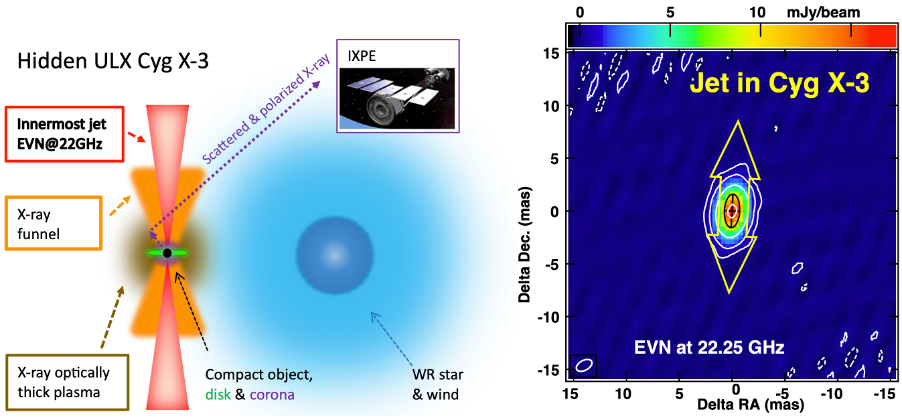
As a Galactic high-mass X-ray binary, Cyg X-3 hosts a compact object accreting matter from a Wolf-Rayet star. X-ray polarization observations show that Cyg X-3 is most likely a hidden ultra-luminous X-ray (ULX) source with a luminosity above the Eddington limit along the direction of an optically thin X-ray funnel. The latest EVN observations of Cyg X-3 at 22 GHz reveal an elongated jet structure in the quiescent radio state for the first time.Read More
Milliarcsecond structure and variability of methanol maser emission in three high-mass protostars
Artis Aberfelds
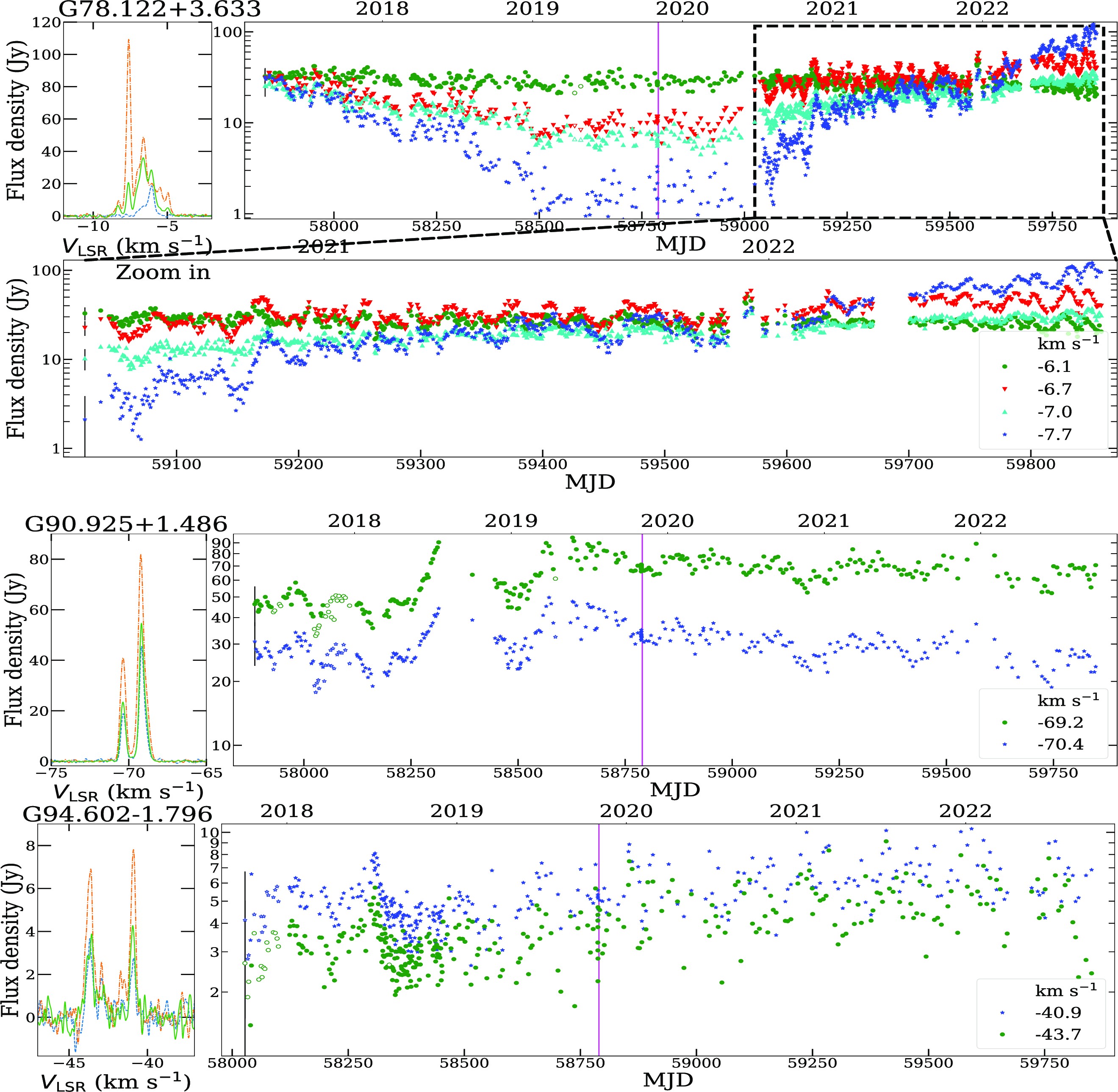
6.7 GHz methanol masers serve as crucial signal indicators in the context of high-mass star formation. It is believed that these Class II masers are radiation-pumped, and as such, their variability is closely linked to the variability of protostars. This connection renders the study of the variability of 6.7 GHz methanol masers a promising tool for investigating processes during high-mass star formation. Read More
Filamentary structures as the origin of blazar jet radio variability
Antonio Fuentes
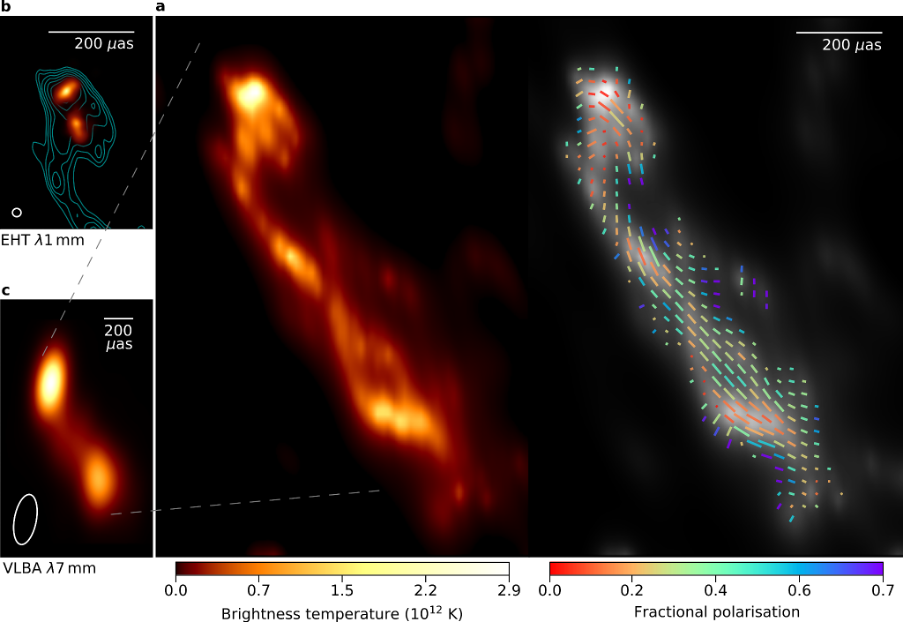
Supermassive black holes at the center of active galactic nuclei (AGN) power some of the most luminous objects in the Universe). In particular, blazars are a subclass of AGNs where a relativistic jet of plasma is ejected from the surroundings of the central engine and points towards Earth with a very low inclination angle, which makes them very bright at radio wavelengths as a consequence of Doppler beaming and suitable for very long baseline interferometric (VLBI) observations. Read here or visit JIVE’s webpage for full info.
Planetary Radio Interferometry and Doppler Experiment: VLBI studies in the Solar System
Leonid Gurvits
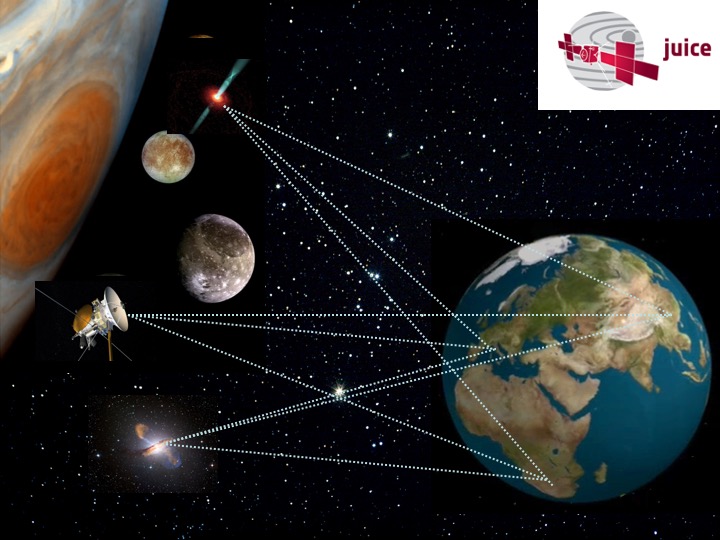
One of the Solar System exploration highlights of the passed year was the launch of the ESA’s Jupiter Icy Moons Explorer (JUICE) mission. After an eight-year long cruise toward the Jovian system, the mission will study the Jupiter’s Galilean moons Calisto, Europa and Ganymede, focusing its attention on the latter while becoming the first artificial satellite of a moon of another planet. Read More
Super sharp images reveal a possible hypernebula powered by a source of fast radio bursts
Shivani Bhandari
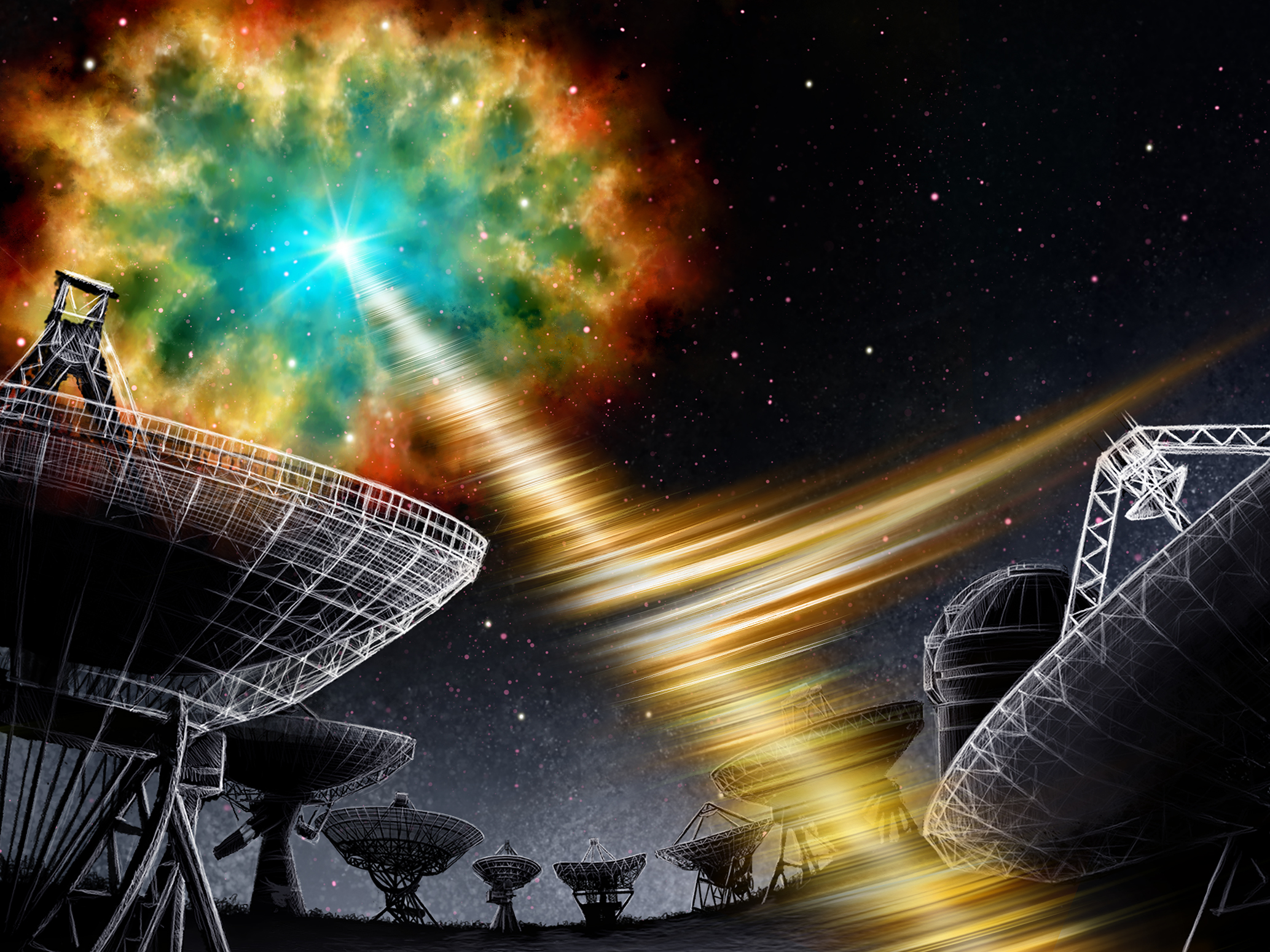
We have confirmed the association of a second FRB source, called FRB 20190520B, with a potential hypernebula. This FRB was discovered using the 500-m FAST telescope in China and appeared to be associated with a more constant source of radio waves. This more constant source of radio waves hints at a hypernebula powered by the same object that makes the bright radio bursts. Read here or visit JIVE’s webpage for full info.
News from ORP

From November 21 to 23, the Opticon RadioNet Pilot project hosted its Consortium Meeting at the European Southern Observatory Headquarters in Garching, Munich. Read more about the meeting here or visit JIVE’s LinkedIn page.
News from RADIOBLOCKS

In just nine months, all five work packages are operating at full capacity. The first deliverable was the dissemination plan crafted by JIVE (WP1), a crucial part of the RADIOBLOCKS strategy. Emphasising the early identification of high-impact technologies and target sectors, the plan outlines ambitions, boundaries and means for sharing project results across a diverse range of research fields and industry sectors.
Last October, a significant milestone was achieved with the two-day technological review conducted by the correlation-focused work package (WP4). During this review, the team thoroughly explored the current technological landscape, examining various aspects and possibilities.
Ongoing meetings between JIVE and work package leaders focus on identifying diverse audiences and facilitating internal and external communication. Upcoming crucial meetings within each work package will assess research progress and plan next steps.
An all-hands meeting for everyone contributing to the project is on the horizon.
News from JIVE

With a message to JIVE director, Agnieszka Słowikowska, the JIVE Council, represented by its Chair, Pablo de Vicente, expressed great delight at the latest report on JIVE's performance over the last 5 years from independent external reviewers. Read More
News from PRIDE

The scientists from JIVE and the Technical University of Delft with roles in the PRIDE experiment for the JUICE mission were awarded ESA's diplomas of appreciation during two events—one organised by JIVE on November 15 and the other at TUD on December 1st. Read more about JIVE's award ceremony and TUD's event.
- Dwingeloo 2024 Summer Research Programme, Dwingeloo, the Netherlands. Beginning of June 2024. The application deadline is January 31.
-
The European VLBI Network Symposium, Bonn, Germany, September 2-6, 2024.
-
Tenth European Radio Interferometry School (ERIS 2024), Granada, Spain, September 30 - October 4, 2024. Registration is expected to open in February 2024.
EVN/JIVE newsletter editorial team: Agnieszka Slowikowska (JIVE Director), Zsolt Paragi (JIVE Head of User Support) and Ioanna Kazakou (JIVE Communications Officer).
For any enquiries about the newsletter, please contact communications@jive.eu.